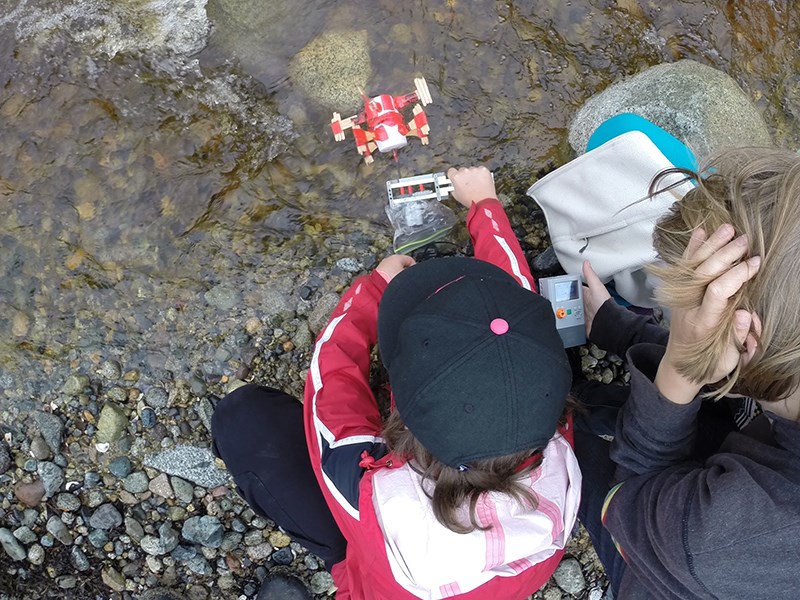A day will come when computer coding is as important as reading and writing, according to some industry leaders. Coding, or programming, has already become one of the fastest growing employment areas within Canada’s economy.
Kelly Creek Community School principal Bill Rounis said he agrees with that to a point. Rather than an existing language, such as English, Rounis said he sees coding as more of a new language for communicating solutions, but not as one that can express human feeling.
“I would never say it’s more important than a spoken language, but I would say it’s our new avenue for solving problems, and that’s what school is all about,” said Rounis.
That avenue is what the future is all about, too, for good or bad.
Coding is what hackers use to expose politicians’ emails, crash computer systems and, legitimately, make the world work by running everything through a binary code of ones and zeroes. The ability to code has been popularized by the television series, Mr. Robot.
“As much as everything is run by computers, it’s supported by humans,” said Rounis.
School District 47 has a plan to prepare students for in-demand information economy jobs, an area where Canada is lagging behind the rest of the world in providing qualified workers for now, let alone in the near future.
According to school district superintendent Jay Yule, after previous attempts to “nail it down,” the district-wide plan to meet BC Ministry of Education’s requirement for coding will include two phases.
Phase one will involve all grade seven students being introduced to coding this year through Lego Mindstorms education kits or, to put it in the vernacular of today’s “to-be-determined” generation, building robots that do cool things.
Coding will not be taught at every elementary school throughout the district until spring of 2017, but at Kelly Creek, “we’ve already started,” said Rounis, who added that he jumped feet first into computer coding with a “let’s do this” attitude and has led his school to early adoption.
Currently, students at Kelly Creek use Lego robotics to study energy conservation.
“They’ve built little turbines that turn with the hydropower we’ve been generating,” said Rounis. “Lego has a piece that can calculate the amount of electricity you’re generating from each power plant and determine which one is the most efficient.”
While not a lot of coding is involved, according to Outdoor Adventure Program teacher Andrew Shostak, whose students are taking part in the hydro project, it does give them some foundation to computer programming, particularly in combination with Kelly Creek’s outdoor education program.
“It’s not just something that they hear about in the news, they can actually generate some electricity themselves and show results,” said Shostak. “They see they need to be proficient in electronics and tech.”
Shostak said his students are able to combine that knowledge with the outdoors.
Plans for phase one of the coding program will be rolled out to the elementary students beginning in February 2017.
Part two of the plan, according to Yule, will be to discuss available options for Brooks Secondary School regarding the implementation of coding in higher level classes.
Rounis said consultations will include conversations about where coding fits into the structure of the Brooks timetable to allow grade eights to go more in depth into coding. In grades 10, 11 and 12, an elective course including coding would be offered to provide an opportunity for students to further their coding, engineering and robotics experiences.



